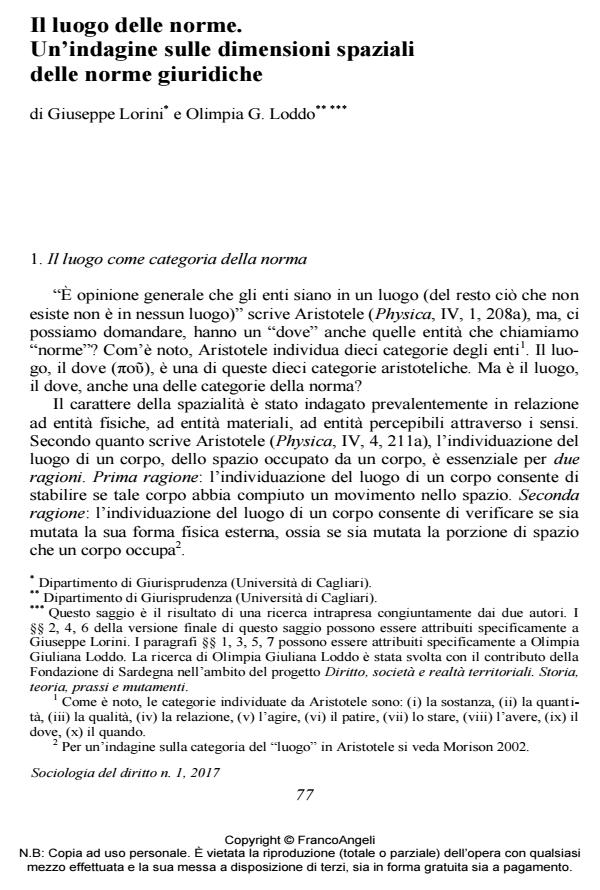Il luogo delle norme. Un’indagine sulle dimensioni spaziali delle norme giuridiche
Titolo Rivista SOCIOLOGIA DEL DIRITTO
Autori/Curatori Giuseppe Lorini, Olimpia G. Loddo
Anno di pubblicazione 2017 Fascicolo 2017/1
Lingua Italiano Numero pagine 26 P. 77-102 Dimensione file 320 KB
DOI 10.3280/SD2017-001005
Il DOI è il codice a barre della proprietà intellettuale: per saperne di più
clicca qui
Qui sotto puoi vedere in anteprima la prima pagina di questo articolo.
Se questo articolo ti interessa, lo puoi acquistare (e scaricare in formato pdf) seguendo le facili indicazioni per acquistare il download credit. Acquista Download Credits per scaricare questo Articolo in formato PDF

FrancoAngeli è membro della Publishers International Linking Association, Inc (PILA)associazione indipendente e non profit per facilitare (attraverso i servizi tecnologici implementati da CrossRef.org) l’accesso degli studiosi ai contenuti digitali nelle pubblicazioni professionali e scientifiche
- Mimetic Constitutive Rules Corrado Roversi, in SSRN Electronic Journal /2012
DOI: 10.2139/ssrn.2143282 - Regolare con artefatti Giuseppe Lorini, Olimpia G. Loddo, Stefano Moroni, in SOCIOLOGIA DEL DIRITTO 1/2022 pp.173
DOI: 10.3280/SD2022-001008
Giuseppe Lorini, Olimpia G. Loddo, Il luogo delle norme. Un’indagine sulle dimensioni spaziali delle norme giuridiche in "SOCIOLOGIA DEL DIRITTO " 1/2017, pp 77-102, DOI: 10.3280/SD2017-001005